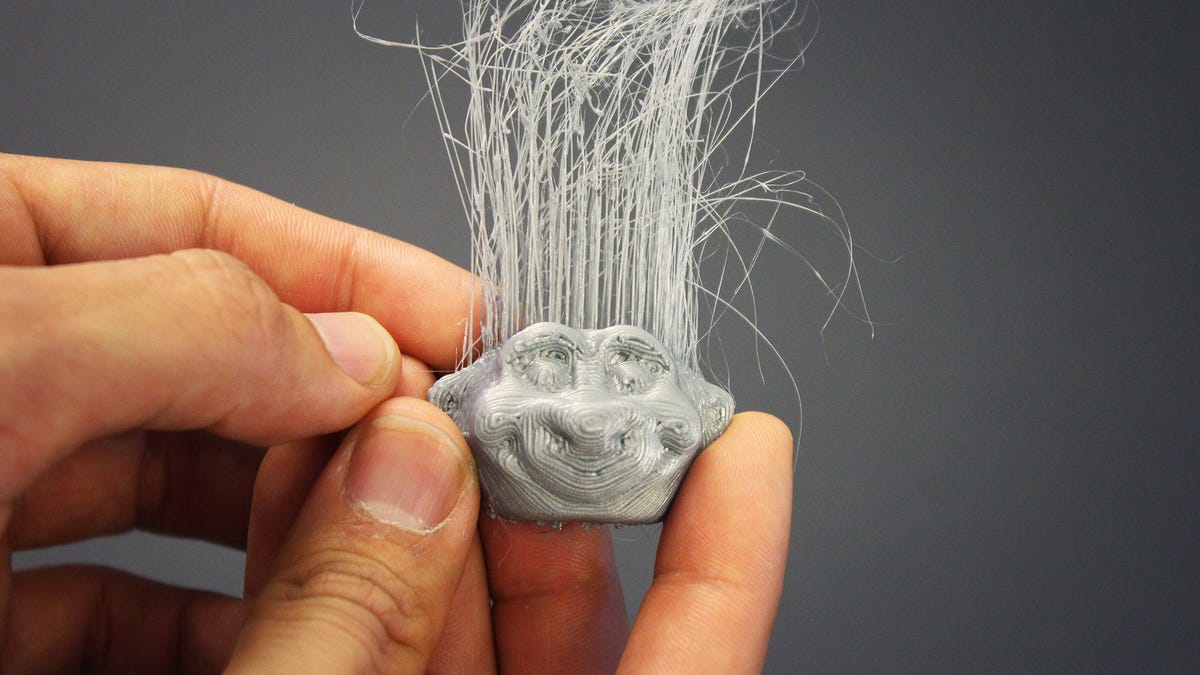3D-printed hair puts a coiffure on your plastic creations
No longer must your 3D-printed objects be bald. Researchers at Carnegie Mellon University figure out how to 3D-print troll hair, brush bristles and horse tails.
Most 3D-printed objects aren't exactly cuddly. They tend to be made of hard plastic. Researchers at Carnegie Mellon University, however, can print model horses with braidable tails, troll heads with brushable hair and wizards with long, lush beards.
The concept for 3D-printing hair was inspired by those tiny strands you get when you pull a hot-glue gun away from a gob of melted plastic. The same idea works for the plastic used by a 3D printer. "You just squirt a little bit of material and pull away," said Gierad Laput, a Ph.D. student in Carnegie Mellon's Human-Computer Interaction Institute.
Laput and his colleagues refer to this as "furbrication."
Printing hair "requires no special hardware, just a set of parameters that can be added to a 3D-print job," Carnegie Mellon notes. The printer used for the experiments cost just $300 (about £196. AU$423). Each strand of hair is made by instructing the printer to create a tiny blob of molten plastic and then pull the print head and print bed off to the side, drawing the plastic out into a thin filament.
The finished hair can be trimmed, braided, brushed or curled. It's conceivable that a printer could turn out an entire human-size wig, but the process is slow. It takes nearly half an hour to make plastic hair for an area just 10 square millimeters in size.
The world of 3D printing has expanded considerably in recent years. Disney Research developed a method for 3D-printing fabric objects like teddy bears. An injured toucan got a beak repair with the help of a 3D-printed prosthesis. The ability to print combable hair onto plastic objects opens up opportunities for makers to get even more creative with their models. Just wait for this method to be used on a 3D-printed Chewbacca toy.


